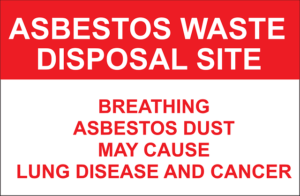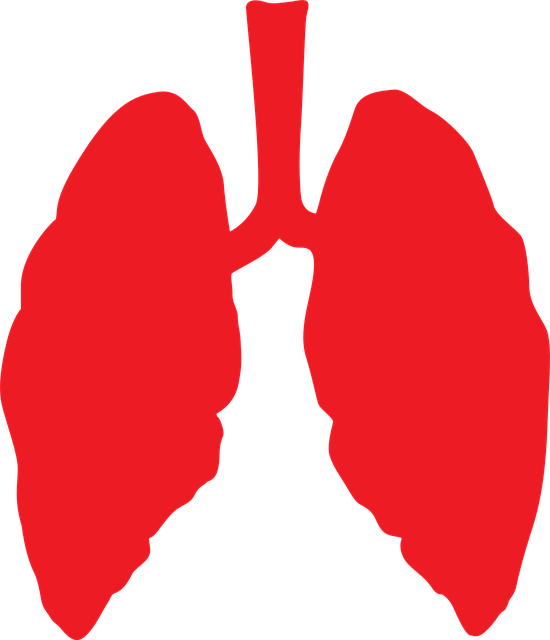Lung Cancer Introduction

Lungs Cancer Causes And Prevention,Cellular breakdown in the lungs is a complicated and destroying sickness portrayed by the uncontrolled development of unusual cells inside the lung tissues. It is a type of cancer that kills a lot of people and is one of the most common in the world. It is usually caused by smoking, but it can also happen to people who don’t smoke because of environmental exposures, genetic predisposition, and other health problems. The illness appears in changed sorts, with side effects normally surfacing in later stages, making early identification and treatment testing yet vital for improved results. The effect of cellular breakdown in the lungs stretches out past actual wellbeing, fundamentally influencing patients’ personal satisfaction and underscoring the significance of progressing research and further developed treatments to battle this impressive condition.
Thank you for reading this post, don't forget to subscribe!Causes of Lung Cancer

A combination of genetic predisposition and exposure to certain risk factors is the primary cause of lung cancer development. The most typical reasons are:
Smoking:
Tobacco smoke, including cigarettes, stogies, and lines, is the main source of cellular breakdown in the lungs. Smokers have a fundamentally higher gamble of creating cellular breakdown in the lungs contrasted with non-smokers, and the gamble increases with the term and amount of smoking.
Handed down Smoke:
Openness to smoke from others’ cigarettes, stogies, or lines likewise expands the gamble of cellular breakdown in the lungs, particularly in non-smokers.
Natural Factors:
Asbestos, radon gas, arsenic, chromium, nickel, and some organic chemicals, as well as prolonged exposure to them, can increase the likelihood of developing lung cancer.
Genetics:
A few people might have a hereditary inclination that makes them more defenceless to cellular breakdown in the lungs even without openness to critical gamble factors.
Pollution in the air:
Long haul openness to elevated degrees of air contamination, including vehicle exhaust, modern emanations, and fine particulate matter, has been connected to an expanded gamble of cellular breakdown in the lungs.
Radiation treatment:
Lung cancer may be slightly more likely in long-term survivors after chest radiation therapy for other conditions.
Lung cancer risk can be significantly reduced by being aware of and avoiding these risk factors.
Symptoms of lung cancer:
The side effects of cellular breakdown in the lungs can fluctuate contingent upon the stage and kind of malignant growth, and a few people may not encounter any side effects in the beginning phases. However, some typical symptoms include:
Relentless Cough:
A relentless or deteriorating hack that doesn’t disappear or changes in its tendency, for example, becoming further or creating blood.
Brevity of Breath:
Trouble in breathing or windedness, particularly during routine exercises or without effort.
Chest Pain:
Pain in the chest, back, or shoulders that can get worse when you laugh a lot or breathe deeply.
Unexplained Weight Loss:
Abrupt and unexplained weight reduction even without changes in diet or active work.
Fatigue:
Feeling curiously drained or feeble even after satisfactory rest.
Wheezing or Hoarseness:
Persevering roughness or wheezing, frequently joined by trouble in gulping.
Hacking up Blood:
Hacking up blood or rust-shaded sputum.
Repetitive Infections:
Successive lung diseases, for example, bronchitis or pneumonia, that won’t determine or make me want more.
Assuming you or somebody you know encounters any of these side effects, particularly in the event that they persevere or deteriorate over the long run, it’s significant to look for clinical consideration immediately for legitimate assessment and determination.
How to Identify Lung cancer?
Identifying lung cancer involves various diagnostic methods and medical evaluations. Here are the steps typically taken to diagnose lung cancer:
Medical History and Physical Examination:
A doctor will review your medical history and conduct a physical examination, including listening to your lungs and discussing any symptoms you might be experiencing.
Imaging Tests:
Imaging tests such as chest X-rays, CT scans, MRI scans, or PET scans can provide detailed images of the lungs, helping to detect any abnormalities or masses.
Biopsy:
If suspicious areas are found, a biopsy is performed to collect tissue samples for examination under a microscope. There are different biopsy methods, including bronchoscopy, needle biopsy, or surgical biopsy, depending on the location and size of the suspected tumour.
Sputum Cytology:
In some cases, examining sputum (phlegm coughed up from the lungs) under a microscope can help identify cancer cells.
Blood Tests:
Blood tests may be conducted to check for specific biomarkers or substances associated with lung cancer.
Pulmonary Function Tests:
These tests measure lung capacity and how well your lungs are functioning, which can help assess the extent of lung damage caused by cancer.
Once a diagnosis of lung cancer is confirmed, further tests, such as additional imaging or molecular testing of the tumour tissue, may be done to determine the cancer’s stage and appropriate treatment options.
It’s crucial to consult a healthcare professional if you have symptoms or concerns related to lung cancer. Early detection and diagnosis significantly improve the chances of successful treatment.
Tests for lung cancer:
Lung cancer is diagnosed using a variety of tests and procedures to determine its extent (stage). A portion of these include:
Imaging Tests:
These tests assist with imagining the lungs and any anomalies:
Chest X-beam:
Gives introductory pictures of the lungs.
Scan Using Computed Tomography (CT):
Offers nitty gritty pictures that assist with recognizing the size, shape, and area of cancers.
MRI:
A type of magnetic resonance imaging used to create detailed images, particularly for evaluating tumours in close proximity to sensitive areas.
Positron Emission Tomography (PET) Output:
reveals the cells’ metabolic activity and aids in determining whether cancer has spread.
Biopsy:
The assortment of tissue tests for assessment under a magnifying instrument is fundamental for affirming disease. The following are examples of various biopsy techniques:
Needle Biopsy:
Utilising a slight needle to extricate tissue tests.
Bronchoscopy:
Inclusion of a slender, lit tube through the mouth or nose into the lungs to gather tissue tests.
The thoracentesis:
removing fluid from the lungs’ surrounding space for examination.
Careful Biopsy:
undergoing surgery to remove samples of tissue for a more comprehensive examination.
Sputum Cytology:
Assessment of bodily fluid hacked up from the lungs to identify disease cells.
Atomic Testing:
Examination of cancer tissue to recognize explicit hereditary transformations or biomarkers. This aids in deciding designated treatments and treatment choices.
Pneumonic Capability Tests (PFTs):
These tests survey lung limit and capability, supportive in arranging treatment draws near.
The specific symptoms or findings observed during initial evaluations, the suspected stage of cancer, and individual circumstances all influence the selection of tests. Continuously counsel a medical services proficient for legitimate evaluation and determination.
Prevention for Lung Cancer:
Diminishing the gamble of creating cellular breakdown in the lungs includes taking on sound way of life decisions and limiting openness to realised risk factors. Here are a few preventive measures:
Abstain from Smoking and Handed down Smoke:
The most essential step is to stop smoking on the off chance that you smoke. Also, avoid conditions where others smoke to diminish openness to handed-down cigarette smoke.
Limit Openness to Carcinogens:
Reduce your exposure to asbestos, radon gas, arsenic, and certain industrial or workplace chemicals, all of which have been linked to an increased risk of lung cancer. Utilise defensive stuff if working in conditions with expected cancer-causing agents.
Keep a healthy lifestyle going:
Eating a fair eating routine wealthy in foods grown from the ground, practising consistently, and keeping a sound weight can add to by and large prosperity and possibly decrease the gamble of disease.
Test for Radon:
Test your home for radon, a dismal, scentless gas that can saturate structures and increment the gamble of cellular breakdown in the lungs. Take precautions to reduce your risk of exposure to radon if elevated levels are found.
Follow Wellbeing Safety measures at Work:
In the event that your occupation includes openness to substances like asbestos or different cancer-causing agents, adhere to safe rules and utilise defensive gear to limit openness.
Go through Customary Well Being Check-ups:
Normal wellbeing check-ups may help in early recognition of any possible issues, considering brief mediation and treatment.
Vaccination:
Consider getting immunisation against specific contaminations, for example, the human papillomavirus (HPV) and hepatitis B infection (HBV), as certain types of these infections are connected to cellular breakdown in the lungs.
While these actions can bring down the gamble of creating cellular breakdown in the lungs, they don’t ensure avoidance. In any case, embracing a sound way of life and limiting openness to unsafe substances can essentially decrease the probability of creating cellular breakdown in the lungs. Counselling a medical care proficient for customised exhortation and early identification is constantly suggested.
Treatment for Lung Cancer:
Therapy for cellular breakdown in the lungs relies upon a few elements including the kind of cellular breakdown in the lungs, stage at determination, in general wellbeing, and individual inclinations. The essential treatment choices include:
Surgery:
Careful expulsion of the growth and encompassing tissue is many times a possibility for beginning phase non-little cell cellular breakdown in the lungs (NSCLC). Now and again, lymph hubs may likewise be eliminated. High level procedures, for example, negligibly intrusive medical procedures might be used.
Chemotherapy:
Utilising medications to kill disease cells or stop their development. It’s ordinarily utilised in a blend with different therapies, particularly for cutting edge stage cellular breakdown in the lungs.
Radiation Therapy:
Utilising high-energy beams to kill malignant growth cells. It tends to be utilised as an independent treatment or joined with a medical procedure or chemotherapy.
Designated Therapy:
This therapy targets explicit anomalies present in malignant growth cells, like transformations or hereditary changes. It’s for the most part utilised for cutting edge stage cellular breakdowns in the lungs and will in general have less secondary effects than chemotherapy.
Immunotherapy:
These medications help the body’s safe framework perceive and battle malignant growth cells. It’s undeniably utilised in different phases of cellular breakdown in the lungs and has shown promising outcomes, especially for specific kinds of cellular breakdown in the lungs.
Clinical Trials:
Support in clinical preliminaries offers admittance to state of the art therapies and treatments being scrutinised for cellular breakdown in the lungs. They can give possible new choices to dealing with the illness.
The decision of therapy or mix of therapies relies upon a few variables, including the malignant growth’s stage, subatomic qualities, in general wellbeing, and the singular’s inclinations. Treatment plans are frequently customised to every patient’s particular circumstance. A multidisciplinary group of medical services experts normally teams up to decide the best methodology.
Conclusion:
Cellular breakdown in the lungs remains a critical worldwide wellbeing challenge, portrayed by its intricacy, various causes, and frequently late-stage determination, adding to its high death rates. While smoking is an essential gambling factor, non-smoking-related causes and natural openings likewise assume significant parts in its turn of events.
Early discovery through screening and consciousness of potential side effects are basic, as treatment results enormously improve with ideal mediation. Progresses in demonstrative methods, treatment modalities, and customised treatments offer expect better administration and further developed endurance rates, particularly when joined with a multidisciplinary way to deal with care.
Lung cancer risk can be significantly reduced through preventative measures like quitting smoking, limiting exposure to carcinogens, leading a healthy lifestyle, and getting regular checkups. Also, progressing research, clinical preliminaries, and headways in immunotherapy and designated treatments keep on extending treatment choices and give reestablished desire to people impacted by this difficult illness.
Raising public mindfulness, advancing smoking discontinuance, upholding for sound living, and supporting continuous examination endeavours are fundamental stages in the aggregate battle against cellular breakdown in the lungs, planning to further develop results, upgrade personal satisfaction, and eventually decrease the weight of this staggering sickness on people and society all in all.
